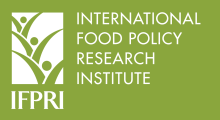Resource information
In recent years the planting of eucalyptus trees in Ethiopia has expanded from State owned plantations to community woodlots and household compounds. In an environment suffering from severe woody biomass shortages water scarcity, erosion and land degradation, fast growing and resilient eucalyptus species perform better than most indigenous woodland and forest tree species (as well as most crops). In addition to increasing biomass and providing ground cover, the sale of eucalyptus poles and products has substantial potential to raise farm incomes, reduce poverty, increase food security and diversify smallholder-farming systems in less-favored areas of northern Ethiopia. Despite the potential for eucalyptus to improve rural livelihoods in northern Ethiopia in 1997, the regional government of Tigray imposed a ban on eucalyptus tree planting on farmlands. The regional government promotes planting of eucalyptus and other species in community woodlots, and has recently begun to allow private planting of eucalyptus on community wasteland and steep hillsides. In this paper, we review the debate about the ecological impacts of eucalyptus trees, as well as the economic factors that influence whether smallholders invest in these trees. Ex ante benefit-cost analysis based on community level survey data from Tigray illustrates that under most conditions planting eucalyptus trees yields high rates of return, well above 20% under most circumstances. The effect of variable harvest rates, the costs of decreased crop production when eucalyptus trees are planted on farmlands, and differences between administrative zones are considered relative to our base case in our rate of return estimates. The importance of fast growing tree species that can accommodate the high discount rates associated with smallholders in this region is emphasized.


